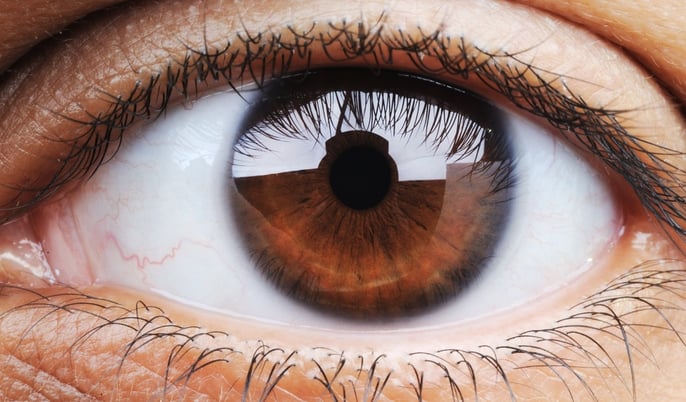
"I can see clearly now the (mig)rain(e) is gone," sang Johnny Nash back in the day, and many migraine patients will no doubt agree with him. That's especially true for sufferers who experience visual disturbances during an attack. While a classic migraine accompanied by lights and patterns is usually a regular migraine with aura, many patients also develop other visual symptoms before, during or after an attack. These headaches are known as retinal, ophthalmic or ocular migraines, depending on the specific type and location of the symptoms.
Types of Visual Problems Caused by Migraines
Just over a quarter of migraine sufferers experience visual disturbances around the time of a migraine. Research shows symptoms most commonly take the form of blind spots (81% of respondents), “double” vision (21%) or spots and stripes of flickering light (77%).
Patients can and often do experience a broad range of visual effects, however, including:
- Blurry or cloudy vision
- A short-term loss of vision or partial vision
- Flashing, flickering or sparkling light of various colors (also called
- Distortion of images (metamorphopsia)
- Tunnel vision, or loss of the ability to see a normal range view
- A mirage effect, that appears heat is rising from the ground
- Images jumping around in front of their eyes
- A whitish-colored haze or film over their eyesight, as if looking through a mist
- Moving waves across the visual field (fortification spectra or teichopsia)
These disturbances might begin before the headache starts, or they could also occur during the headache. The signs can last for anything between a few seconds up to 30 minutes, and don’t always develop in conjunction with a headache. Some patients only experience the visual disturbances, without developing accompanying headache pain.
Identifying the Cause
Migraine-related problems can occur in both eyes, even though the vision loss could be worse in one eye only. This makes it particularly difficult for patients to judge without the help of a medical professional. It’s important, however, to identify whether vision problems are related to migraines, because non-migraine visual problems could be cause for serious concern. Some conditions that produce similar symptoms include:
- Retinal or vitreous detachment in the eye, which produce dark spots floating in front of one eye only. While these are usually painless, they may be accompanied by flashes of light and vision loss. If a detachment is not treated urgently by an ophthalmologist the patient runs a risk of permanent loss of vision.
- Flashes of light lasting for an hour or longer, which could also indicate a detachment.
- Temporary loss of vision in one eye in patients older than 45, which does not accompany a headache, could be signs of a stroke or mini-stroke (transient ischemic attack) or arterial inflammation.
- Episodes of partial or complete blindness that begin suddenly and without a headache, accompanied by neurological conditions such as dizziness, weakness, or numbness.
- Glaucoma, which results in a halo effect in the visual field.
To identify whether vision problems are migraine-related, your doctor may ask you to cover first one eye, then the other, to test what you can see through each. This helps to determine whether the symptoms come from the brain and manifest in both eyes, or whether they occur on only one side of your visual field.
Treatment Options for Migraine-Induced Blurred Vision
Once you’ve been diagnosed, there are no special therapies to treat migraine-related visual disturbances, outside of your regular migraine treatments. Since the vision problems usually don’t last very long, patients often choose not to treat them specifically. By keeping a record of your migraine attacks and triggers you can learn to recognize when a headache is likely to follow visual problems, and use the onset of these as an advance warning. That could give you the opportunity to take over-the-counter painkillers or migraine medication before the pain strikes, hopefully reducing its intensity.
If you experience visual disturbances regularly that are not accompanied by a headache, see an ophthalmologist and your primary care doctor to rule out optical or other medical conditions that could be serious.


